- Quick Read
- Deep Read ( 8 Min. )

Why is Christian Science in our name?
Our name is about honesty. The Monitor is owned by The Christian Science Church, and we’ve always been transparent about that.
The Church publishes the Monitor because it sees good journalism as vital to progress in the world. Since 1908, we’ve aimed “to injure no man, but to bless all mankind,” as our founder, Mary Baker Eddy, put it.
Here, you’ll find award-winning journalism not driven by commercial influences – a news organization that takes seriously its mission to uplift the world by seeking solutions and finding reasons for credible hope.
Explore values journalism About usIn Today’s Issue
- What the US can do to deter a wider war in the Middle East
- Today’s news briefs
- In the mountains, residents are Hurricane Helene’s first responders
- Iranian missiles, Israeli invasion bring Mideast back to the brink
- Port strikes threaten economic stress before election
- His own party calls him traitor. Can Japan’s new PM rebuild trust in politics?
- Jimmy Carter’s century: A spirit of community softens Georgia’s political rifts
Monitor Daily Podcast
- Follow us:
- Apple Podcasts
- Spotify
- RSS Feed
- Download
TODAY’S INTRO
Israel’s guiding principle
 Mark Sappenfield
Mark Sappenfield
“Escalate to deescalate.” That is a key idea in today’s story by Christa Case Bryant and Anna Mulrine Grobe. It is the principle behind Israel’s invasion of Lebanon to dismantle Hezbollah. It is the principle behind the devastation in Gaza.
It is now clearly Israel’s guiding principle post-Oct. 7, mirroring the United States’ reaction to 9/11. Will it make Israel safer? Or will it spawn new cycles of violence? The answer will reverberate globally. Today, we look at Iran’s response, America’s own tough decisions, and whether Israel knows where this new stage of the war is going.
Share this article
Link copied.

Help fund Monitor journalism for $11/ month
Already a subscriber? Login

Monitor journalism changes lives because we open that too-small box that most people think they live in. We believe news can and should expand a sense of identity and possibility beyond narrow conventional expectations.
Our work isn't possible without your support.
What the US can do to deter a wider war in the Middle East
An Iranian missile barrage, following weeks of Israeli attacks, heightens the risk of regional war. The United States faces a choice between emphasizing deescalation and stepping up support for Israel’s efforts to dismantle Iranian proxy Hezbollah.

-
Anna Mulrine Grobe Staff writer
Amid growing concern about a wider war in the Middle East following a series of Israeli attacks, Iran launched a missile strike on Israel on Tuesday evening local time. In Tel Aviv, air raid sirens sounded as residents took refuge in bomb shelters, and Israeli military bases and the Mossad intelligence agency were also reportedly targeted.
Israel has decapitated the leadership of key Iranian ally Hezbollah in recent weeks, killing at least seven top commanders, including its longtime leader, Hassan Nasrallah, in a Friday airstrike. On Monday, it launched a ground invasion of Lebanon in a bid to further dismantle the militia.
On Tuesday morning, the United States had said Iran was planning an imminent missile strike and warned Tehran not to up the ante.
To prevent an escalation, the Department of Defense announced Monday that it was sending a “few thousand” more troops to bolster the roughly 40,000 U.S. service members currently in the region.
The question now, some analysts say, is if the U.S. should still be seeking deescalation or letting the Israeli military continue its rapid dismantling of Hezbollah, the most powerful proxy in Iran’s “Axis of Resistance” against Israel and American influence in the region.
What the US can do to deter a wider war in the Middle East
Amid growing concern about a wider war in the Middle East following a series of Israeli attacks, Iran launched a missile strike on Israel Tuesday that Pentagon officials estimate was “twice as large” as an attack last April.
No U.S. forces were hurt and initial indications are that there was “minimal damage” on the ground, Maj. Gen. Patrick Ryder said Tuesday, adding that Israel was able, with U.S. help, to “successfully defend itself.”
U.S. Navy destroyers with Aegis defense systems fired a dozen interceptors at incoming Iranian missiles, Pentagon officials said.
In Tel Aviv, air raid sirens sounded across the city as residents took refuge in bomb shelters, and Israeli military bases as well as the Mossad intelligence agency were also reportedly targeted.
Israel – thanks to its precise intelligence – has decapitated the leadership of key Iranian ally Hezbollah in recent weeks, killing at least seven top commanders, including its longtime leader, Hassan Nasrallah, in a Friday airstrike. On Monday, it launched a ground invasion of Lebanon in a bid to further dismantle the militia.
The question now, some analysts say, is whether the U.S. should still be seeking deescalation or letting the Israeli military continue its rapid dismantling of Hezbollah, the most powerful proxy in Iran’s “Axis of Resistance” against Israel and American influence in the region.
That hinges on whether the risk that destroying Hezbollah could spark a wider war outweighs the potential to reshape the region into a more stable, prosperous place.
“Sometimes you have to escalate to deescalate,” says Richard Shultz, director of the International Security Studies Program at The Fletcher School at Tufts University in Medford, Massachusetts.
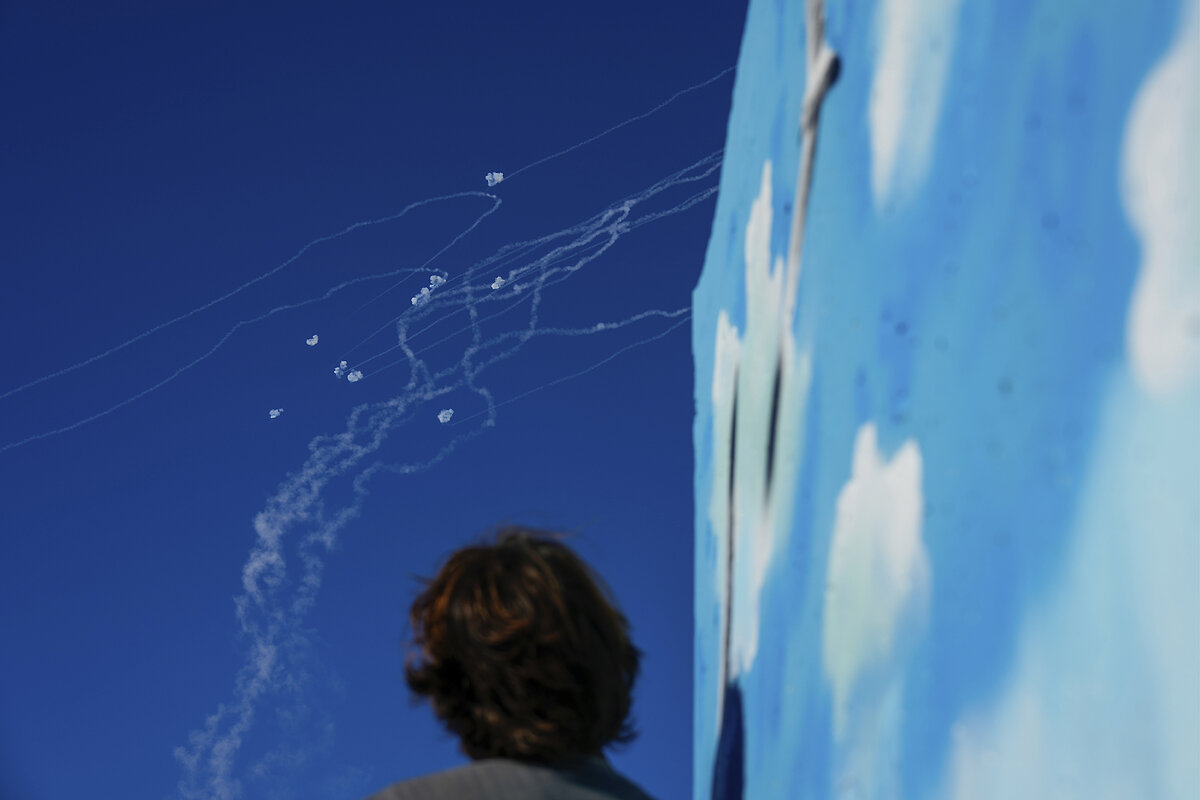
The possibility for a wider war in the Middle East has been a top-of-mind concern for U.S. officials – particularly since Hamas attacked Israel last fall, provoking a devastating war in Gaza.
To prevent such an escalation, the Department of Defense announced Monday that it was sending a “few thousand” more troops to bolster the roughly 40,000 U.S. service members currently in the region.
The U.S. military presence includes attack planes designed to protect ground forces, fighter jets, and a submarine capable of carrying as many as 175 Tomahawk cruise missiles – all at the disposal of U.S. commanders should they be needed to defend Israel or U.S. forces, Pentagon officials say.
The U.S. this month also deployed a contingent of troops specializing in evacuations. There were some 85,000 Americans in Lebanon as of 2022.
Should the U.S. support Israel’s escalation against Hezbollah?
This well-worn military strategy is particularly apt, analysts add, given that Iran uses Hezbollah as a proxy force to wage war without having to declare it.
A U.S.-designated terrorist group, Hezbollah grew under Mr. Nasrallah’s leadership into a powerful political force in Lebanon. Over the past three decades, Hezbollah members and its affiliates have been accused of a series of deadly attacks, from the 1983 Beirut bombing of the U.S. Marine barracks, to bombings of Jewish targets in Argentina, to a cross-border raid into Israel in 2000 in which three Israeli soldiers were abducted and killed. Hezbollah has since built up an arsenal of more than 100,000 missiles pointed at Israel.
Israel, which borders Lebanon and fought Hezbollah in two major wars during Mr. Nasrallah’s tenure, has led a blistering offensive against the Shiite militia in recent days.
Israel has reportedly killed 19 senior Hezbollah officials in recent airstrikes and a Sept. 17 operation that rigged pagers of Hezbollah operatives and wounded about 4,000 people.
That rapid decapitation of the militia’s leadership is the result of years of preparation.
When retired U.S. Army Col. Derek Harvey was serving as the National Security Council’s senior director for the Middle East in 2017, he was struck by the “meticulous” monitoring and mapping of such Hezbollah assets and leaders that Israel brought to the White House.
“The Israelis know almost every house that Hezbollah has munitions and communications centers in, where it has missiles, garages built for their launchers – every gas station, every small business entity, every warehouse,” he says. “It’s 15 years of detailed intelligence work that is allowing them to deconstruct Hezbollah.”

“Why would you stop before the job’s done?” asks Mr. Harvey, who also served as senior adviser to Gen. David Petraeus when he commanded U.S. forces in Iraq. The Lebanese people have had to live under the rule of a “criminal mafia organization” that has destroyed their economic opportunities and their lives, he says. “They see it as a new opportunity – if Israel can finish the job.”
Republican members of Congress have criticized the Biden-Harris administration for appeasing Iran, to the detriment of the region, and see this as an opportunity to take a stronger stance of deterrence.
“While I appreciate the administration’s positioning of military assets in the region to support Israel, there is much more that needs to be done to defeat these adversaries,” said Rep. Michael McCaul, chair of the House Foreign Affairs committee, recommending expedited arms transfers and sanctions. “It is abundantly clear that after its April missile attack, Iran was not deterred.”
Like Hamas in Gaza, Hezbollah embeds itself in cities. So taking it out means harming civilians, too. That has sparked global opprobrium against Israel, even as the Israeli military says it strives to minimize casualties.
U.S. Secretary of State Anthony Blinken said that while Israel unquestionably has the right to defend itself from terrorist organizations, how it does so matters.
“The question is, What is the best way to achieve its objectives, to reach enduring security?” he said in a press conference on Friday on the sidelines of the United Nations General Assembly in New York.
Determining the risks of an all-out war
An “all-out war” between Israel and Hezbollah would be “devastating” for both countries, with numbers of displaced people and casualties that could “equal or exceed what we’ve seen in Gaza,” Defense Secretary Lloyd Austin warned Friday on CNN.
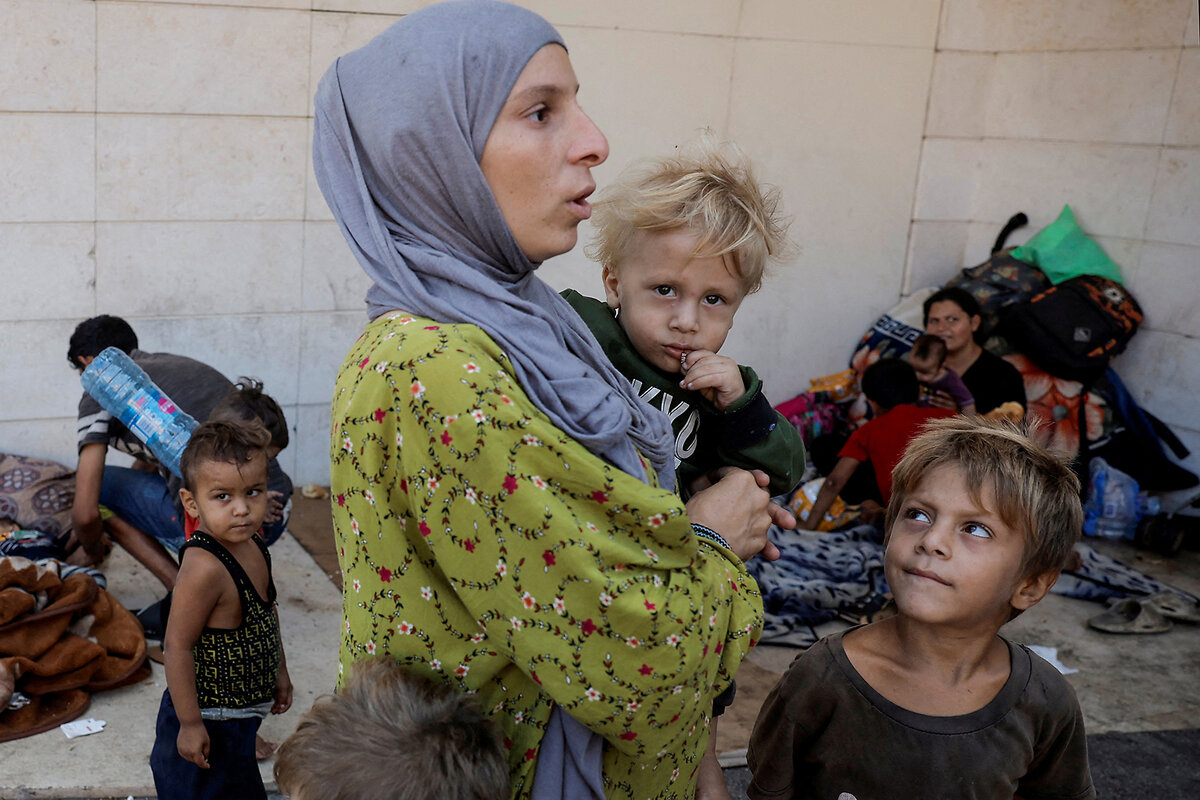
Every time the region has been brought to the brink of a wider war since Hamas’ Oct. 7 cross-border attack, the U.S. has exerted its levers of power “in every way possible.” A twin approach of deterrence and diplomacy has so far succeeded in averting escalation, say State Department officials. But Tuesday’s Iranian missile barrage poses a new challenge.
“Obviously, we do not want to see this conflict continue to escalate,” said State Department spokesperson Matthew Miller at a Tuesday afternoon briefing. “That said, we have been clear that there must be consequences for this attack.”
Israel is continuing to pursue Hezbollah, while also now talking about retaliation against its sponsor, Iran. As it stands, Hezbollah’s decision-making capabilities are seriously disrupted. Depending on who takes over leadership, it could choose to fire missiles at Israel or to deescalate.
There are reasons they may choose the latter, says Sean McFate, a former Army officer and now adjunct professor of war and strategy at Georgetown University’s School of Foreign Service. But to encourage Hezbollah to do that, he adds, the Biden administration must more clearly articulate where its red lines lie.
A political party as well as a militia, Hezbollah could also be hammered at the polls for the Israeli airstrikes that have stepped up in recent days, hitting central Beirut for the first time in a year of fighting, displacing more than 200,000 Lebanese civilians, and killing more than 1,000. Across the border in Israel, some 60,000 citizens have been displaced from the north since the government evacuated them last year.
One plus of the proxy war that Iran and Israel have been waging up until now, Dr. McFate adds, is that it offers both countries not only plausible deniability but also face-saving off-ramps for deescalation. For the past decade, Israel has been conducting air strikes against the Iranian Qods Force in Syria. It hasn’t turned into a wider war, he adds, because the states compete in the shadows.
The role U.S. troops in the region play
As the conflicts increasingly move out of the shadows, and Hezbollah and Iran weigh next steps, the U.S. aims to be a key factor in their decision-making calculus.
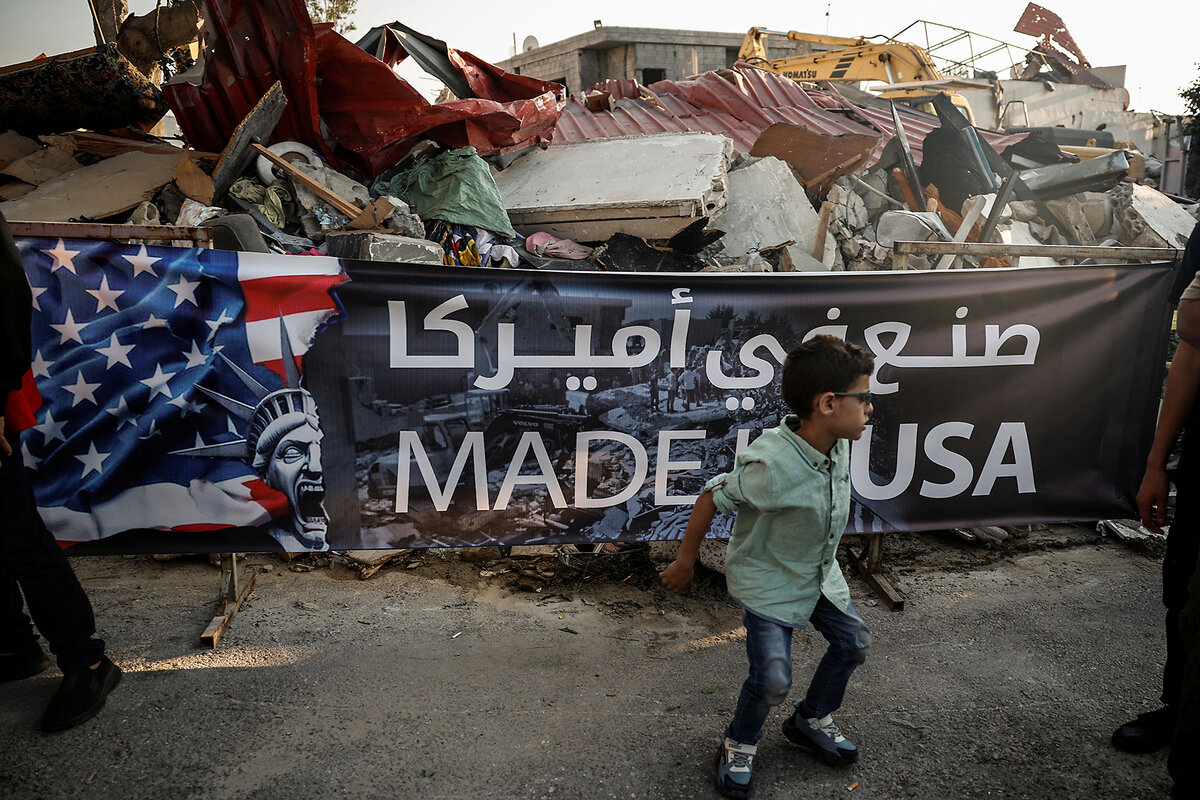
The Biden administration’s ability to influence Israel is another matter still, as its operation into Lebanon this week has laid bare. Defense Department officials had stressed their opposition to it. “We certainly don’t think a ground operation is the right path forward,” Deputy Pentagon Press Secretary Sabrina Singh said Friday. “That’s something that the secretary has been pretty clear about in his calls” with his Israeli Minister of Defense Yoav Gallant.
By Monday, the operation underway, Secretary Austin “agreed on the necessity of dismantling attack infrastructure along the border,” according to a summary of a phone call between the two leaders released by the Pentagon.
Against this backdrop, U.S. military troops are in the region “to protect our own forces and also defend Israel, should it be attacked,” Major General Ryder told reporters in August.
When asked what defending Israel means, or whether the U.S. would ever attack Iran, he declined to share specifics, saying the focus remains on deescalation.
Beyond public messaging, having troops in the region, however, also makes them a military target, analysts point out.
“The only strategic logic I would see of Hezbollah taking pot shots at [a U.S. aircraft] carrier would be to try to suck the U.S. into an overreaction on the ground,” Dr. McFate says. “That would be a huge propaganda win for Hezbollah in the Arab world.”
It would also be the opposite of deescalation. The U.S. dilemma in this conflict, and for the prospects of a wider war, is that deterrence not only means putting mighty forces in place.
It also means being ready to use them.
Christa Case Bryant reported from Washington, and Anna Mulrine Grobe from Brussels.
Editor’s note: This story has been updated with news of Iran’s missile strike against Israel, and responses from U.S. officials.

Today’s news briefs
• New Mexican president: Claudia Sheinbaum Pardo takes the oath of office as Mexico’s first female president.
• Tulsa massacre review: Assistant U.S. Attorney General for Civil Rights Kristen Clarke announces the first-ever review of the 1921 Tulsa Race Massacre by the Department of Justice.
• Georgia abortion ban: A Georgia judge strikes down a law that took effect in 2022 and effectively prohibited abortions beyond about six weeks of pregnancy.
• Julian Assange address: The WikiLeaks founder tells the Parliamentary Assembly of the Council of Europe that he was freed because he “pled guilty to journalism.”

In the mountains, residents are Hurricane Helene’s first responders
Locals in western North Carolina, where rescue efforts are impeded by terrain and a thinly dispersed population, are assisting each other in the aftermath of Hurricane Helene – and preparing for years of recovery.

- Quick Read
- Deep Read ( 5 Min. )
During 12 years as a National Guard member, Tom Ford worked on relief missions to hurricane-hit communities. But he says he’s never seen anything as bad as the impact of Hurricane Helene on his rural Appalachian community here in western North Carolina.
After the storm, Mr. Ford joined his neighbors in clearing debris from back roads, using chain saws and trucks. Almost everyone here can share stories of pitching in, including ferrying food to stranded neighbors.
Across this region, rescuers are still searching for missing people, and at least 125 are dead across the six states that took the brunt of the hurricane. Residents who made it through the storm have grown frustrated as they wait for power, water, cell services, and food, even as state and federal officials pour supplies into affected areas.
Officials in Asheville, the largest population center in the region, have compared the city’s destruction to Hurricane Katrina, which hit New Orleans in 2005. While the physical and human toll here is likely to be lower, the mountainous terrain and dispersed population are challenging for responders and could slow the transition to a recovery phase, after services are restored.
“It’s going to take years,” says Mr. Ford, noting that Katrina’s impact is still apparent.
In the mountains, residents are Hurricane Helene’s first responders
During 12 years as a National Guard member in New York, Tom Ford worked on relief missions to hurricane-hit communities, including when Sandy pummeled the New York area in 2012.
But he’s never seen anything as bad as the impact of Hurricane Helene on his rural Appalachian community here in western North Carolina.
On Monday, Mr. Ford stood in an empty parking lot in Hendersonville, the county seat, where he came to meet his father-in-law, Matt Karkos. Mr. Karkos had no power or water at his house, on which a tree had fallen, and many roads were impassable. He had decided to drive to South Carolina to stay with his brother. Mr. Ford had brought a can of gas from his generator supply to top off the tank.
“You saved us,” Mr. Karkos told him. “I didn’t know if we were going to make it.”
Across this region, rescuers are still searching for missing people, and at least 125 are dead across the six states that took the brunt of the hurricane. Residents who made it through the storm have grown frustrated as they wait for power, water, cell services, and food, even as state and federal officials pour supplies into affected areas, including Asheville, the largest population center in the region.
Officials in Asheville, where a river burst its banks and inundated low-lying neighborhoods, have compared the city’s destruction to Hurricane Katrina, which submerged much of New Orleans in 2005.
While the physical and human toll now is likely to be lower, the mountainous terrain and dispersed population make the response to Helene tough to manage and could slow the transition to a recovery phase, after power and other services are restored. Water systems in Asheville could take weeks to restore; residents are depending on trucked potable water.
“It’s going to take years,” says Mr. Ford, noting that Katrina’s impact is still apparent.

How hard-hit areas are faring
After the storm passed, Mr. Ford joined his neighbors in clearing debris from back roads, using chain saws and trucks. Almost everyone in Henderson can share stories of pitching in to help, ferrying food to stranded neighbors and removing tree limbs strewn around.
But rescuers are struggling to reach cutoff communities, including vacation homes by Lake Lure, once an idyllic draw for visitors, now a swamp of splintered trunks, boats, and docks.
The logistics of delivering aid along roads flooded or choked with trees and debris has slowed their efforts in some of the hardest-hit communities. Some survivors have been rescued by boat or helicopter, but many others are still unaccounted for. National Guard units from North Carolina and other states are working with local responders in the area.
“The devastation was beyond belief,” North Carolina Gov. Roy Cooper said at a news conference Monday. “And even when you prepare for something like this, this is something that’s never happened before in western North Carolina.”
Asheville has been hit by storms before, but rarely: A flood in 1916 swelled the French Broad River to 21 feet above its normal level, and 80 people died in the resulting floods. Last Friday, the river peaked at more than 24 feet, making it the worst in over a century.
In the aftermath, gas, food, and water are scarce. After assisting his father-in-law, Mr. Ford got back in his car with his wife and two young girls. The few grocery stores open had long lines and only accepted cash. But the family had enough food at home.
“We come together as a community”
Around the corner, Shunneisha Allen was lined up with dozens of other vehicles outside a food distribution center run by a faith-based nonprofit. She had driven home early last Thursday from the hospital where she works, not knowing it would be days before she’d leave again. Power had just been restored to her apartment building. Now she needed food and drinking water.
Growing up in Greensboro, she knew how hurricane winds could tear up buildings. But this region of the state wasn’t at risk, or so she thought. “The mountains used to be safe,” she says.
Her parents live in Chimney Rock, by Lake Lure. When she couldn’t contact them last Friday – no cell service – her sister decided to drive there, but didn’t reach their home. Ms. Allen shows a cellphone video of her sister by her abandoned car, brown water swirling around her waist. “I said, ‘Good thing you can swim,’” Ms. Allen laughs. Her parents were later rescued by the fire department.

At the food pantry, Elizabeth Willson Moss was preparing volunteers in the driveway beside stacks of boxes of canned food and bags of apples and celery. Her organization, Interfaith Assistance Ministry, regularly feeds families and had stocks on hand at its warehouse for this first day of Helene handouts. More will be needed to keep the operation going, and she’s waiting on requests to state and federal agencies that are bringing in supplies.
“They’re still in search-and-rescue mode. On our end, we know we can help,” she says. “We’re using every bit of food that we have.”
Like many families cut off by storm damage but otherwise safe, Kayla Hertzfeld, who lives in Ashe County, had enough food for the first few days. “Our kids are surviving on peanut butter and jelly sandwiches,” she says. By Monday, though, she decided to leave town with her two young children, joining a crush of cars headed out, while her husband stayed behind to help out.
Ms. Hertzfeld knows neighbors whose homes are uninhabitable. Then there are families that nobody has reached, including those she works with as a speech pathology assistant. “It’s bad. Real bad,” she says.
Seeing the scale of destruction makes her wonder how rural communities like hers, sprinkled across rugged mountains, can rebuild what has been lost. But she’s encouraged by what her husband and others are doing to clear roads and act as first responders to trapped families.
“We come together as a community to support each other,” she says. “It’s one of those communities. That’s going to be the biggest help to get us back on our feet.”
Editor's note: The spelling of Kayla Hertzfeld's name and her job title, speech pathology assistant, were corrected on Oct. 1, 2024, the day of initial publication for this article.

Iranian missiles, Israeli invasion bring Mideast back to the brink
Israel says it sent troops into Lebanon to restore some security for its own residents. But Iran’s missile attack on central Israel, in defense of its ally Hezbollah, showed that regional security is far more complicated than a mere border operation.

- Quick Read
- Deep Read ( 5 Min. )
Iran launched a broad missile attack against Israel Tuesday evening, hours after Israeli ground forces crossed into southern Lebanon to further degrade Iran’s most prized regional ally, Hezbollah.
The exchange of fire followed two weeks of bold Israeli attacks that killed most of the Shiite militia’s senior echelon, including the revered Hassan Nasrallah, Iranian leader Ali Khamenei’s most trusted field commander.
The Iranian missile barrage – an indication that the Israeli incursion into Lebanon had much more significance than just a border action – threatened to ignite a regional conflagration that the United States has been trying to suppress since the Hamas attack last October. Iran’s attack was an indication further that the blows to Hezbollah are changing the regional dynamic and seen as threatening Tehran’s interests.
Israel’s incursion into Lebanon marked the first steps of an operation that Israel had promised would be “limited.” But there are fears in Israel and abroad that as with most previous Israeli incursions into this rugged territory, there may be no real exit plan.
“As always, it’s easier to begin a war, but always harder to end one. The front in Gaza reminds us how difficult these situations are for Israel,” Gili Cohen, Israel Radio’s political commentator, cautioned listeners just hours after the operation began.
Iranian missiles, Israeli invasion bring Mideast back to the brink
Iran launched a broad missile attack against Israel Tuesday evening, hours after Israeli ground forces crossed into southern Lebanon to further degrade Iran’s most prized regional ally, Hezbollah.
The exchange of fire followed a dizzying two weeks of bold Israeli attacks that killed most of the Shiite militia’s senior echelon, including the revered Hassan Nasrallah, Iranian leader Ali Khamenei’s most trusted field commander.
The Iranian missile barrage – a clear indication that the Israeli incursion into Lebanon had much more significance than just a border action – threatened to ignite a regional conflagration that the United States has been trying to suppress since last October. Ever since Hamas launched a deadly attack into Israel on Oct. 7, triggering the war in Gaza, Hezbollah has been firing into Israel in support of its Palestinian ally.
Iran’s attack, which Israel said included 180 Iranian missiles and lasted just under an hour, was an indication further that the death of Mr. Nasrallah and the blows to Hezbollah are changing the regional dynamic and seen as threatening Iran’s interests.
Eyewitness reports in Jordan suggested that several Iranian missiles were intercepted over the Jordanian desert. Israeli TV showed heavy damage to a school in Gedera, in central Israel, and reported that a Palestinian worker from Gaza was killed in Jericho, in the West Bank.
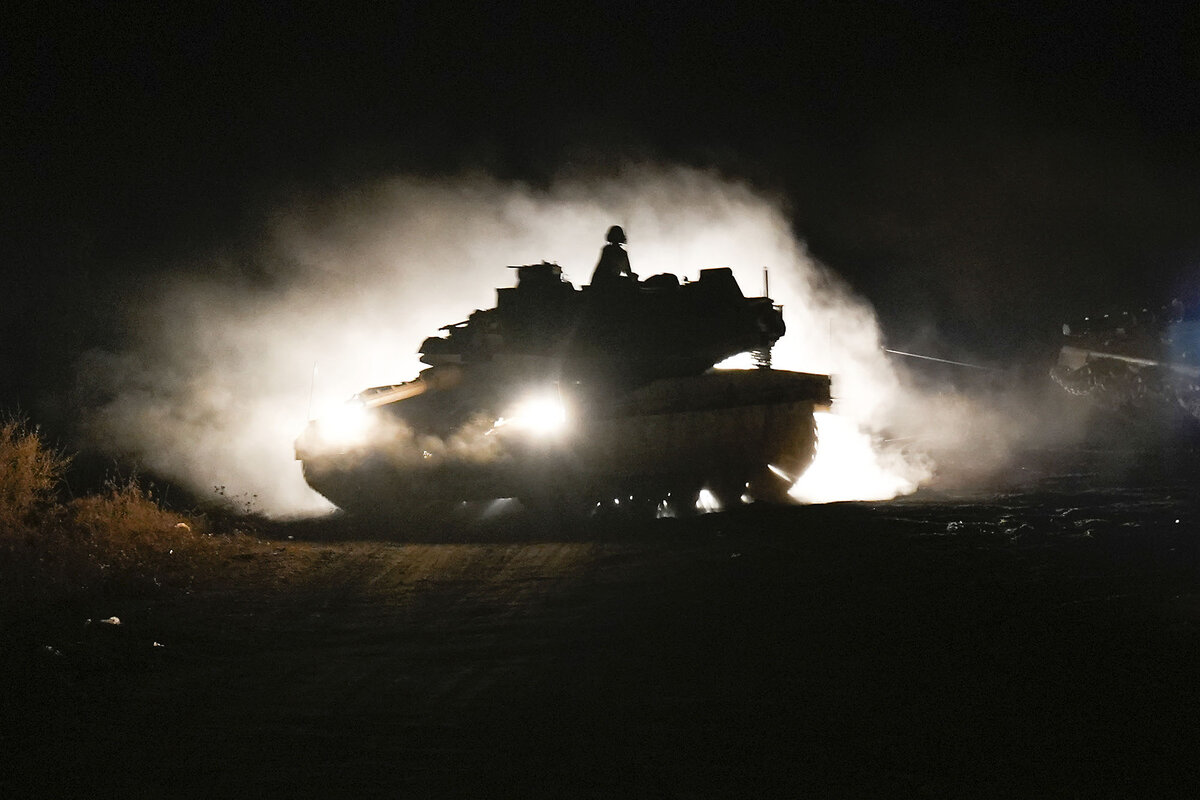
In Lebanon, the incursion by Israeli paratroopers, commandos, and an armored unit marked the first steps of an operation Israel had promised would be “limited.”
Gili Cohen, Israel Radio’s political commentator, says the threat of Hezbollah carrying out an attack similar to Oct. 7, along with the promise that a ground incursion would indeed be a limited mission in scope, helped convince the Americans to green-light it.
According to the Israel Defense Forces (IDF), it is focused on destroying tunnels, hideouts, missiles, and other weaponry the Iranian proxy force has used to assault Israeli border communities for the past year.
Before the missile attack, Israel said it had received a warning from the U.S. that an Iranian attack was imminent, and the Home Front Command instructed people living in central Israel and elsewhere to “stay close to a protected space.”
“We are prepared at the highest level together with our friends the United States,” Daniel Hagari, the IDF spokesperson, said in an address to the country.
Hezbollah also fired five missiles toward central Israel Tuesday, in two salvos, before Iran struck, and Israel continued its airstrikes in Beirut.
Earlier, as news broke in Israel about the ground war, a static-filled recording of Elad Tzuri, commander of Israel’s 7th Armored Brigade, addressing his troops before they went into Lebanon was broadcast on Israeli media: “Your mission is to destroy the infrastructure of Hezbollah and kill them wherever hiding. The Israeli people are depending on us.”
But there are fears both abroad and at home that as with most previous Israeli incursions into this rugged territory, there may be no real exit plan.
“As always, it’s easier to begin a war, but always harder to end one, the front in Gaza reminds us how difficult these situations are for Israel,” Ms. Cohen cautioned listeners just hours after the operation began.

Goals of ground operation
The stated goal of sending troops into southern Lebanon is to enable Israel’s some 65,000 residents who live near the country’s northern border to return home almost a year after they were evacuated.
The day after Hamas launched its catastrophic attack on Israel’s southern border, killing some 1,200 people and taking another 250 hostage, Hezbollah began firing on northern Israel in what it said was an act of solidarity with a fellow member of the Iranian “Axis of Resistance.”
Hezbollah made a cease-fire in Gaza the condition for stopping its daily barrages.
More than 8,000 Hezbollah rockets have been shot toward border-area towns, villages, and IDF installations in the past year, destroying homes and businesses and burning large swaths of forests. Displaced residents were sent to hotels or temporary homes in the center of the country.
Following their successes against Hezbollah over the previous two weeks, Israeli officials who decided to proceed with the ground invasion did so at least in part because of comments from Hezbollah that the group would continue to fight after Mr. Nasrallah’s death.
According to Yossi Kuperwasser, a retired brigadier general and former head of the Research Division of the IDF’s Military Intelligence, they decided to seize the advantage they currently have to disable Hezbollah to make the return of the northern residents possible.
Israel has been pounding Hezbollah positions in southern Lebanon for days. That will help facilitate the operation, says General Kuperwasser, but it is not enough to get to the many tunnels and other “hidden infrastructure that may look like benign facilities but that in some cases may be hideouts.”
There are concerns that the labyrinth of tunnels Hezbollah has been building for nearly 20 years since the last Lebanon war, in 2006, could include passages inside Israeli territory.
The end phase of Israel’s limited operation remains unclear. Most analysts say it will likely include some version of a security zone south of the Litani River.
Israel patrolled a security zone in southern Lebanon in the aftermath of its 1982 invasion of the country. It withdrew in 2000 after a public backlash by those weary of the guerrilla war against their forces by Hezbollah militants, but proponents note that it did prevent deadly cross-border attacks that had been so harrowing for Israeli citizens.
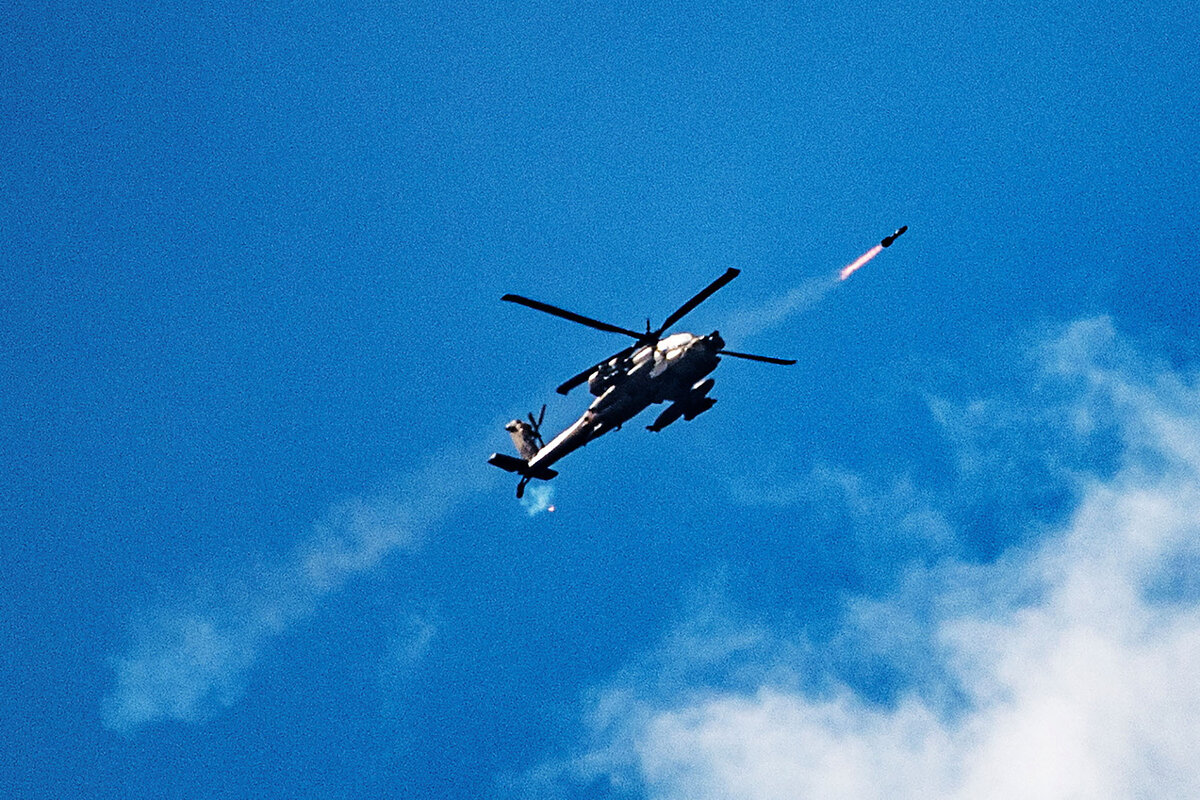
Exit strategy
General Kuperwasser says he is not sure what exit strategy exists, but, “There has to be a way to guarantee that Hezbollah operatives do not come back and pose a threat to those living along the northern border again.”
There’s little trust within Israel that the Lebanese army or an international force would be sufficient protection against Hezbollah in a security zone, at least not in the near future. But there are ideas being floated that after a certain period, perhaps Israel would be able to monitor what is happening from its own side of the border with the help of technology that did not exist when Israel withdrew in 2000.
For now, the strategy that appears in place is that the dismantling of Hezbollah’s ability to strike Israel from the border area will eventually lead to a diplomatic deal that will ensure Hezbollah forces are pushed back across the Litani River. Such an agreement was made in 2006, but never implemented.
“The important thing is that we are at a stage where we are turning the tables. Until now, it was the Iranians shaping the Middle East in a way that is dangerous for Israel and its ability to defend itself, and now tables have turned,” says General Kuperwasser. “It happened gradually, but the pace accelerated dramatically, and the structure Iran built is cracking and they are now on the defensive.”

Port strikes threaten economic stress before election
Workers unions have enjoyed a boost in popularity since the ’70s with the absence of major strikes. The new dockworker strike, which began on Tuesday, may challenge that popularity and test the Biden-Harris administration.

- Quick Read
- Deep Read ( 5 Min. )
At a minute past midnight Tuesday morning, the clock started ticking on one of America’s most potentially consequential and disruptive strikes in recent memory. Dockworkers walked off the job at America’s east coast and Gulf Coast ports from Boston to Houston. It was their first strike in almost 50 years.
Economically, the strike puts a hard stop on nearly half of America’s imports and a good share of exports. Politically, it puts Democratic presidential nominee Kamala Harris in a bind with Election Day exactly five weeks away.
The 36 ports on strike, which employ some 45,000 members of the International Longshoremen’s Association, handle a huge amount of America’s internationally traded goods: at least half of clothing, footwear, and agricultural imports coming in by ship. Other imports received at the ports include major slices of America’s imported cars, car parts, pharmaceutical ingredients, machinery, and fabricated steel. Ditto for exports, especially agricultural goods.
The strike’s political impact will depend not only on its duration but also on how the presidential candidates respond. The White House said President Joe Biden and Vice President Harris were monitoring the strike’s impact on supply chains.
Former President Donald Trump, known for his anti-union rhetoric but wanting union member votes, is treading carefully as well.
Port strikes threaten economic stress before election
At a minute past midnight Tuesday morning, the clock started ticking on one of America’s most potentially consequential and disruptive strikes in recent memory. Dockworkers walked off the job at America’s east coast and Gulf Coast ports from Boston to Houston, their first work stoppage in almost 50 years.
Economically, the strike puts a hard stop on nearly half of America’s imports and a good share of exports. Politically, it puts Democratic presidential nominee Kamala Harris in a bind with Election Day exactly five weeks away. Does she push the administration to step in and temporarily end the strike, angering her union base? Or does she work behind the scenes, hoping the two sides settle before consumers feel the pinch?
Such overarching strikes rarely last very long, labor historians say, because so much money is at stake that both sides are eager to settle.
But “If we’re talking about a monthlong strike where you do start to see actual things disappear from the shelves – like there’s shortages on Christmas goods – then I can see that as being a negative” for the vice president, says Erik Loomis, a labor historian at the University of Rhode Island in Kingston.
At the moment, neither pro-labor Vice President Harris nor President Joe Biden is signaling that they would use their executive powers, which allow them to impose an official 80-day cooling-off period in which strikers return to work to prevent stoppages that threaten the health or safety of the United States.

Everything from clothing to cherry imports could be affected
The ports on strike, which employ some 45,000 members of the International Longshoremen’s Association, handle half or more of clothing, footwear, and agricultural imports coming in by ship, as well as a large portion of America’s imported cars, car parts, ingredients for making pharmaceuticals, machinery, fabricated steel and precision instruments. They also handle a substantial percentage of exports, especially agricultural goods.
While most of these goods can be stored for months, that’s not the case for perishables like imported cherries (90% flow through these ports) or bananas (25%).
These goods come by container – the brightly colored rectangular steel boxes piled up on ships – and dockworkers play an essential role in loading and unloading those containers. (Cargo that doesn’t arrive in containers – such as oil, gas, and coal – is not affected by the strike.)
The impact of the work stoppage won’t be felt immediately. Retailers, grocers, and even state governments have been preparing for a walkout for months, rerouting shipments to west coast ports that aren’t on strike or ordering early to ensure they’d have enough candy on hand for Halloween and apparel and shoes for Christmas.
“New York has been working around the clock to ensure that our grocery stores and medical facilities have the essential products they need,” New York Gov. Kathy Hochul said in a statement early Tuesday morning.

Unions grow bolder
The strike represents a new assertiveness among unions, say labor economists and historians, from the rise of independent unions at places like Starbucks and Amazon to the big contract win by a newly aggressive United Auto Workers last year. The dockworkers’ dispute centers around pay and automation, with union members eager to make up for buying power lost to inflation during their most recent six-year contract.
But pay may not be the biggest issue. On Monday, the union reportedly turned down a last-minute offer for a nearly 50% increase in pay, according to the United States Maritime Alliance, which represents the port terminal operators and carriers.
Automation may be a bigger grievance. In June, the union accused members of using an automated system for processing the entrance and exits of trucks at ports, which it claimed violated the current contract. Talks stalled after that.
With a base salary of $81,000 a year (and some members earning over $200,000 with lots of overtime), the union reportedly is now demanding a 77% raise over its six-year contract and no further automation of operations. Two key dockworker jobs – operating cranes and moving containers – can now be done by remote-controlled machines.
Strikes can help make unions stronger
Major strikes can build support for unions. Widespread teacher strikes in 2018 managed, on the whole, to win parents’ support because the teachers lived in their communities, parents could identify with their struggles over low pay, and the community came to believe that the teachers’ demands would benefit its children, according to research by Alexander Hertel-Fernandez, a political scientist at Columbia University in New York.
But strikes can also backfire if workers can’t connect with the public. With their high pay, work largely invisible to the general population, and a union with a past history of ties to organized crime, the dockworkers face an uphill battle.
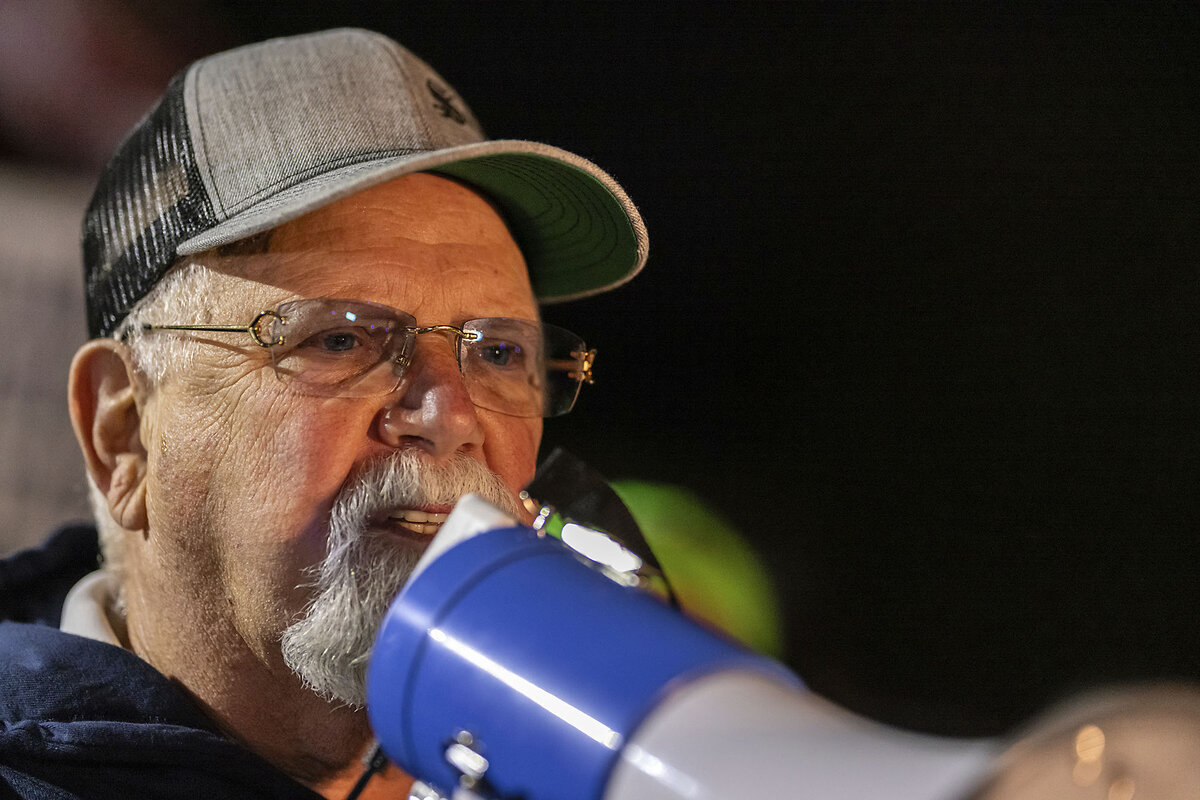
The flip side of that story is that the International Longshoremen’s Association has, over the years, made an implicit pact with employers, accepting advances in technology that reduce jobs in exchange for higher pay for those who keep working.
“The reason they’re making $200,000 a year is because they’re one of the few unions that were able to capture, for their remaining members, the fruits of the technological innovation,” says Nelson Lichtenstein, a historian at the University of California, Santa Barbara. That may prove a positive narrative for Americans at a time when newer innovations, like artificial intelligence, threaten to change or eliminate their jobs, he adds.
The political impact of the strike will depend not only on how long it lasts, but also on how the presidential candidates respond.
A month after the 2022 election, President Biden signed legislation blocking a potential railroad strike that would have posed similar logistical problems for the U.S. In a statement Tuesday, the White House said that Mr. Biden and Ms. Harris were closely monitoring the dockworker strike’s impact on supply chains.
Former President Donald Trump may also have to tread carefully, says Mr. Lichtenstein. “These longshoremen are, from the Republican point of view, the kind of workers they want to appeal to” – especially in coastal swing states with ports, such as Georgia and North Carolina.

His own party calls him traitor. Can Japan’s new PM rebuild trust in politics?
Japan’s new prime minister – its third in four years – offers the ruling Liberal Democratic Party a steady hand in a time of crisis. Snap elections will be a test of how quickly his administration can restore trust.

- Quick Read
- Deep Read ( 4 Min. )
-
By Takehiko Kambayashi Contributor
Ishiba Shigeru was sworn in as Japan’s prime minister Tuesday following a series of political scandals that, along with economic stagnation, has tanked his party’s approval ratings.
The former defense minister secured the position last week when he narrowly won a race to lead Japan’s Liberal Democratic Party, which holds a majority in parliament. His victory came as a surprise.
For decades, fellow lawmakers have considered Mr. Ishiba a “party traitor” due to his vocal criticism of colleagues. Even now, some worry his fraught relationships with LDP heavyweights will weaken the incoming administration.
But among smaller party chapters and the general public, Mr. Ishiba’s perceived integrity, vast government experience, and focus on revitalizing Japan’s rural regions have made him extremely popular.
The new prime minister has announced plans to hold snap elections for the lower house of parliament on Oct. 27 – a year earlier than required by law – in what many view as an effort to capitalize on his popularity and secure the LDP’s majority.
“I would like our administration to trust the public and win public confidence,” said Mr. Ishiba.
His own party calls him traitor. Can Japan’s new PM rebuild trust in politics?

Economic stagnation and a slew of political scandals have tanked the reputation of Japan’s long-ruling Liberal Democratic Party (LDP). Now its members must put their faith in a “party traitor” to build back trust.
Former Defense Minister Ishiba Shigeru officially took office as prime minister on Tuesday, days after the LDP, which holds a parliament majority, elected him party leader. The internal party election was one of the most competitive in recent history, and Mr. Ishiba’s narrow victory came as a surprise.
For decades, fellow lawmakers have held Mr. Ishiba in low regard due to his vocal criticism of LDP colleagues. A stint with an opposing party in the 1990s earned him the “traitor” label. Even now, some wonder if his fraught relationships with LDP heavyweights will weaken the incoming administration. But among smaller party chapters and the general public, Mr. Ishiba’s perceived integrity, vast government experience, and focus on rural revitalization have made him extremely popular.
“Mr. Ishiba is a steady hand” for the party and Japan, says Tamura Shigenobu, a Tokyo-based political analyst and former LDP staffer.
The new prime minister has announced plans to hold snap elections for the lower house of parliament on Oct. 27 – a year earlier than required by law – in what many view as an effort to capitalize on his popularity and secure the LDP’s majority.
“I would like our administration to trust the public and win public confidence,” said Mr. Ishiba shortly after he was sworn in.
Campaigning amid scandal
Since last November, a few party factions have been accused of failing to report revenue from fundraising parties and amassing millions of dollars in slush funds. The scandal led to the arrest of one LDP lower house member and the indictment of several lawmakers. Four cabinet members resigned, and this August, Prime Minister Kishida Fumio announced that he too would step down.
Cabinet approval ratings, which were above 50% when Mr. Kishida took over, have hovered between 20% and 28% since the scandal erupted, according to Kyodo News polls.
It’s an old pattern, says Yamaguchi Jiro, political science professor at Hosei University in Tokyo.
“The LDP has long-standing problems of money influencing politics,” he explains. “When they face a barrage of criticism … they select a leader who looks relatively decent and get over the crisis.”
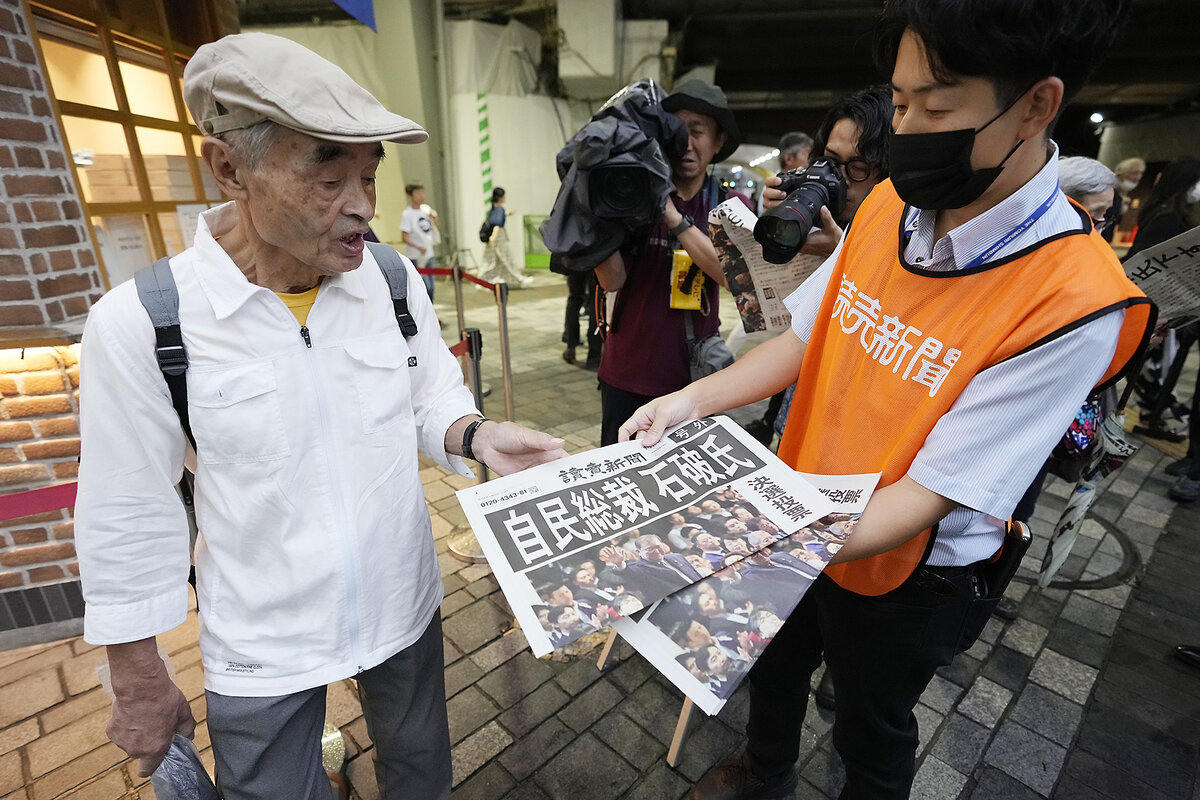
The party spent weeks on its internal leadership election, which critics describe as a PR fest. The general public doesn’t vote, and the campaigns receive lots of friendly media attention. Candidates did not hold deep discussions on issues like rising living costs or Japan’s aging population.
Mr. Ishiba did, however, touch on foreign policy, vowing to “protect Japan” amid North Korea’s missile and nuclear programs and China’s growing assertiveness in the region. “Today’s Ukraine could be tomorrow’s Asia,” he said during the campaign, floating an idea to create Asia’s version of NATO.
“His NATO idea would definitely ruffle some feathers” in Washington and parts of Asia, says Jeff Kingston, director of Asian studies at Temple University in Tokyo, but it probably won’t matter much in this month’s election. Voters care far more about the economy.
Economic concerns and elections
One of the biggest problems Japan has to grapple with, says Mr. Kingston, “is to clean up the mess left behind by Abenomics,” the late premier Abe Shinzo’s signature economic strategy.
Business communities have, in general, loved the low corporate taxes, aggressive government spending, and other market-friendly policies that come with Abenomics. But not everyone is seeing the wealth. Today, many Japanese families are struggling to make ends meet as inflation and consumption tax hikes drive up costs of living, while wages stay the same.
Mr. Ishiba, a rare critic of Mr. Abe and longtime advocate for fiscal discipline, said during his campaign that he saw “room to increase” taxes on corporations. This sparked a minor stock market panic Monday – the first trading day after Mr. Ishiba defeated an Abenomics evangelist in the LDP leadership race. The Nikkei falling nearly 5%, as investors sold off stocks in manufacturing and tourism companies.
The new prime minister’s pick for finance minister – Abe administration veteran Kato Katsunobu – should help smooth things out.
During Mr. Kato’s own failed campaign for LDP leader, the former health minister promised to use Abenomics to double household income. His appointment today suggests that Mr. Ishiba is looking to reassure investors, and take a more balanced approach to economic growth, though the cabinet has yet to release a detailed plan for Japan’s economy.
Whatever the Ishiba administration comes up with, analysts expect the LDP to defend its majority in parliament. Not only is Japan’s opposition woefully fragmented, but Mr. Ishiba is building on a strong base of rural support, including in western Japan’s Tottori prefecture, where his constituency is located.
Okuda Satoshi, who manages the Chamber of Commerce in Tottori’s Yazu town, says Mr. Ishiba has always fought on behalf of Japan’s outer regions.
“Mr. Ishiba has earned the respect and the trust of local residents,” Mr. Okuda says. “He is clean and acts on his beliefs.”

Jimmy Carter’s century: A spirit of community softens Georgia’s political rifts
Plains is a politically divided town in the battleground state of Georgia. But the ethos of a peacemaker president is tangible on front porches here.

- Quick Read
- Deep Read ( 5 Min. )
The porch where former U.S. President Jimmy Carter has spent countless holidays and family milestones here in southwest Georgia is wrapped with wisteria boughs that shade a “Welcome to Our Porch” sign.
Next door, a former boarding house where the Democratic president’s parents lived as a young couple a century ago also has a porch where visitors can sit for a spell.
The fact that one yard has a “Harris-Walz” sign and the next one a “MAGA 2024” sign captures the current American political zeitgeist. In 2020, some 52% of Sumter County voters chose Democrat Joe Biden; 47% wanted to reelect Republican President Donald Trump. As Mr. Carter became a global icon, his home state became a battleground.
But step onto either porch, and the spirit of “Uncle Jimmy” as diplomat and peacemaker presides.
As the former president marks his centennial at his low white rambler nearby, citizens in his hometown of Plains gathered on Saturday for the annual peanut festival – one of several events to celebrate the only U.S. president to reach the 100-year milestone.
“He is a blessing for this town, this state, and this whole world,” says Lisa Ragusa, whose house has the pro-Trump sign. “He showed us that humanitarianism is important.”
Jimmy Carter’s century: A spirit of community softens Georgia’s political rifts
The porch where former President Jimmy Carter has spent countless holidays and family milestones here in Southwest Georgia is wrapped with wisteria boughs that shade a “Welcome to Our Porch” sign.
Next door, a former boarding house where the iconic Democratic president’s parents lived as a young couple a century ago also has a porch where visitors can sit for a spell.
The fact that one yard has “Harris-Walz” signs and the next one over has a “MAGA 2024” sign captures the current American political zeitgeist. In 2020, 52% of Sumter County voters chose Democrat Joe Biden; 47% wanted to reelect Republican President Donald Trump. As Mr. Carter became a global icon, his home state became a battleground.
But step onto either porch, and the spirit of “Uncle Jimmy” as diplomat and peacemaker still presides.
“He is a blessing for this town, this state, and this whole world,” says Lisa Ragusa, who owns the house with the pro-Trump sign. “He showed us that humanitarianism is important.”
As Jimmy Carter prepares to celebrate his centennial at his low, white rambler nearby, citizens in his hometown of Plains gathered on Saturday for the annual peanut festival – one of several events to honor the only U.S. president ever to reach the 100-year milestone.

The former president, a Navy veteran who opposed racial segregation and pursued a national energy policy and disarmament, has been living quietly at home for more than a year.
On Saturday, folks took a few moments to sing “Happy Birthday” to Mr. Carter. Two men wearing Trump election regalia were among the loudest belting out the tune.
The Naval Submarine Base Kings Bay in St. Marys, Georgia, sent a large framed photograph of Mr. Carter as a young sailor, signed with well wishes. When Kim Carter Fuller, one of his relatives and the current teacher of his former Sunday School class, showed two staunch local conservatives the gift, both teared up.
“Carter is not a saint – no politician is a saint – and he’s not really all that humble either,” says Jonathan Alter, the New Jersey-based author of “His Very Best: Jimmy Carter, A Life.” “But Carter shows you can be a person of great decency and integrity and use your example and grit to change the world.”
“A Baptist preacher to run the Hells Angels”
Mr. Carter can look back from his Oct. 1 birthday on a remarkable, polymathic life.
But his centennial also comes at a time when his legacy is being more closely studied.
Mr. Carter’s term in Washington is still under debate. Despite his status as a former president, he wasn’t invited to the podium during the 2008 Democratic Convention in Denver.
When he took the reins in Washington, it “was like sending a Baptist preacher to run the Hells Angels [motorcycle club],” says Ms. Fuller’s husband, Mark. “It ain’t gonna work.”

Setbacks overshadowed accomplishments like civil service reform and natural gas deregulation. The Iran hostage crisis, perhaps the greatest challenge of his presidency, along with inflation and high energy prices, soured the country’s mood.
Mr. Carter’s coalition crumbled. He lost the Jewish vote because of his support for a Palestinian homeland and opposition to new settlements in the Israeli-occupied territories. He lost the evangelical vote after he opposed tax breaks for the largely white private schools that cropped up throughout the South after integration.
“He was a very unusual president, and he was actually a pretty consequential president,” says Kai Bird, whose book “The Outlier” documents Mr. Carter’s lasting impacts.
“He put human rights as a central founding block of our whole foreign policy, and no president since then has been able to walk away from that idea,’’ Mr. Bird says. “By talking about human rights and putting pressure on dictatorial regimes, he changed the world.”
From “Peewee” to peacemaker
For many Georgians, Mr. Carter remains both enigmatic and relevant.
Born into the Jim Crow South and known as “Peewee” as a boy, he played barefoot with Black friends in the cotton fields of Archery, Georgia. He has held dozens of titles, from president to door-to-door missionary, from college professor to master woodworker.
“It’s about the effort, it’s about the self-mastery, and the legitimate pride he takes in the work,” says Mr. Alter, the biographer.

In the 1970s, Mr. Carter broke from Plains Baptist Church after it blocked a Black preacher from taking the pulpit. He and his wife, Rosalynn, later joined Maranatha, a new church with an integrated congregation. Over the years, Mr. Carter’s Sunday School sermons became a magnet for admirers.
Ms. Fuller remembers one session after she took over the class. Mr. Carter was in attendance as she discussed Moses and the burning bush, a story set in a biblical region called Midian. Mr. Carter raised his hand.
“Uncle Jimmy, you don’t have to raise your hand,” she said. He then enthralled the group with a story of his visit to Midian.
After his presidency, he returned to his home here, a source of strength for him. But Plains is also a reminder that America is at a crossroads.
Grandson Jason Carter has told multiple interviewers that his grandfather hoped to live long enough to vote for Vice President Kamala Harris, the Democratic presidential nominee.
Pilgrimage to Plains
John Tompkins, a registered Republican and self-described political junkie, counts former President George H.W. Bush and Mr. Carter – both one-termers – as his favorite presidents, largely for the way that they stayed true to themselves.

Mr. Tompkins made a pilgrimage here from Vero Beach, Florida, on Saturday.
A collector, Mr. Tompkins owns a rare signed copy of Mr. Carter’s “Crisis of Confidence” speech, where he reminded the country: “All the legislation in the world can’t fix what’s wrong with America. What is lacking is confidence and a sense of community.”
The following year, American voters sent Mr. Carter home and Ronald Reagan to the White House.
It “explains in many ways how we got to where we are today,” says Mr. Tompkins.
But Mr. Carter’s real accomplishment at his century mark seems equally reflected in the dueling porches across the street, which ask visitors to consider that differences don’t have to divide – or alienate – a community of friends or strangers.
“Carter reminds us that people really don’t want to despise each other,” says Mr. Tompkins. “They want to give each other their due.”
Other headline stories we’re watching
(Get live updates throughout the day.)The Monitor's View
Winning elections with voices of truth
- Quick Read
- Deep Read ( 2 Min. )
-
By the Monitor's Editorial Board
As the elected president of Moldova – one of Europe’s poorest countries – Maia Sandu often uses part of her day to rebut online falsehoods. No, she did not ban a popular berry-infused tea last year, as one video on social media claimed. Her latest swat at fake news was against a post alleging that farmers would be forced to sell their land if Moldova joined the European Union.
“I saw a new scarecrow about our lands,” she said this week. “I want to make quite clear: Moldova’s integration into EU poses no risk to our lands.”
But she then made a larger point that illustrates why her country may be at the top of a massive disinformation campaign orchestrated by Russia: “It is important that the lies do not determine the fate of Moldova,” she said. “We must make sure that the people take decisions based on the truth.”
Of all the democracies targeted by Moscow’s propaganda machine this year, Moldova is currently experiencing one of the most intense “firehose[s] of falsehoods,” as American officials call it. On Oct. 20, voters will not only choose a president but also vote in a referendum on putting EU membership as a national objective into the constitution.
Winning elections with voices of truth

As the elected president of Moldova – one of Europe’s poorest countries – Maia Sandu often uses part of her day to rebut online falsehoods about her or her government. No, she did not ban a popular berry-infused tea last year, as one video on social media claimed. Her latest swat at fake news was against a post alleging that farmers would be forced to sell their land if Moldova, a former Soviet state, joined the European Union.
“I saw a new scarecrow about our lands,” the Harvard-educated leader said this week. “I want to make quite clear: Moldova’s integration into EU poses no risk to our lands.”
But she then made a larger point that illustrates why her country, sandwiched between Ukraine and Romania, may be at the top of a massive disinformation campaign orchestrated by Russia:
“It is important that the lies do not determine the fate of Moldova,” she said. “We must make sure that the people take decisions based on the truth.”
Of all the democracies targeted by Moscow’s propaganda machine this year, Moldova is currently experiencing one of the most intense “firehose[s] of falsehoods,” as American officials call it. On Oct. 20, voters will not only choose a president but also vote in a referendum on putting EU membership as a national objective into the constitution.
With polls showing a victory for Ms. Sandu as well as a “yes” vote on joining the EU, Russia and its allies within Moldova seem to be aiming their false narratives at widening the existing social divisions and preparing to destabilize the country with protests after the vote. But they are up against Moldova’s well-oiled capability to help people discern fact from fiction.
With assistance from European countries and the United States, Moldova’s government, civil society, and news media are learning how to detect online lies and counter them, helping to build up the public’s media literacy. Domestic media, for example, have received training in fact-checking. Social media giants Facebook and TikTok have agreed to fight disinformation during the election campaign. In addition, many Russian news sites have been banned.
“We commend Moldova’s leaders for continuing to capably manage these threats [and] build resilience,” stated the U.S., United Kingdom, and Canada in June. One result of Moldova’s efforts: Even politicians seen as openly siding with Moscow support EU integration.
“Only the voice of truth can overcome this fear and propaganda,” analyst Serghei Turcanu stated on the Ava website. For President Sandu, that is almost a daily task. The lies, however, may be vanishing more quickly.

A Christian Science Perspective
Each weekday, the Monitor includes one clearly labeled religious article offering spiritual insight on contemporary issues, including the news. The publication – in its various forms – is produced for anyone who cares about the progress of the human endeavor around the world and seeks news reported with compassion, intelligence, and an essentially constructive lens. For many, that caring has religious roots. For many, it does not. The Monitor has always embraced both audiences. The Monitor is owned by a church – The First Church of Christ, Scientist, in Boston – whose founder was concerned with both the state of the world and the quality of available news.
How I’m praying about politics
- Quick Read
- Read or Listen ( 4 Min. )
-
By Pamela McKnight
In fretting about elections, this author realized the need to get beyond personal opinions to see the harmonizing impact that an understanding of God can have.
How I’m praying about politics
With my country’s national elections only several weeks away, the subject of government is certainly on my mind. These days it would seem almost impossible not to have strong personal opinions about what should or shouldn’t be done, or about who should or shouldn’t be elected. There seems to be so much at stake.
We each have much to contribute in praying about politics – and it isn’t our political opinions that are needed in order to pray effectively! As a student of Christian Science, I’ve learned that the effective place to begin prayer is with God. Affirming that God alone governs is a powerful prayer, and in particular the Bible says of God’s government: “The kingdom is the Lord’s: and he is the governor among the nations” (Psalms 22:28).
Effective prayer doesn’t involve requesting a certain preconceived outcome, even when it comes to national or local elections. It can be a challenge to set aside personal convictions about what is important and right for our country and the world. But, if we pray with a specific outcome in mind, even if we have the best of motives, our prayer is almost certainly opposed to someone else’s well-intentioned prayer for the completely opposite outcome.
More importantly, praying for a specific outcome is an attempt, or at least a desire, to take the reins of government into our own hands – as if we knew best!
Recently I decided to take a different tack than outlining my favored disposal of events. I began to consistently acknowledge God’s righteous government, as Christ Jesus taught us to do in the Lord’s Prayer.
Mary Baker Eddy, the founder of this news organization and a follower of Jesus, was asked numerous times to give a statement about her political views. She responded, “I am asked, ‘What are your politics?’ I have none, in reality, other than to help support a righteous government; to love God supremely, and my neighbor as myself” (“The First Church of Christ, Scientist, and Miscellany,” p. 276).
This seemed like a good template to use. I began to pray to see more of the righteous government of God in my own life and recognize this divine governance to be the reality even where we seem to be seeing the opposite.
On this basis of understanding what is spiritually true, we can pray for God’s hand to be seen in all aspects of government, including local and national elections. We can pray to know that God’s Word governs the thoughts and acts of politicians and voters alike, and that the divine guidance needed to form and enact policies that are fair and just to all is always coming to the men and women in leadership positions. And no matter who occupies a position of authority, we can pray to know that person is a child of God, and that God’s children reflect the wisdom of divine Mind, the compassion of divine Love, and the integrity of divine Truth.
Our prayers for the world must include faith in the allness of God, Spirit, and His government of the universe.
The opposite of prayer is fretting and reacting. I found myself engaged in this kind of unprayerful thinking not too long ago. In reaction to so much of what I was hearing, seeing, and reading, I would frequently shake my head and think, “This country is just so divided!”
Then it hit me. Why would I agree to such a thought? I reasoned that God would never create ideas that were at odds with each other. That would ensure chaos.
As God is the only creator, His ideas blend in sweet harmony and for the sole purpose of showing forth His glory.
This thought alleviated my distress and gave me a concrete way to pray to address the inharmony that seems so prevalent. Since then, I have felt empowered to consistently bring a prayerful thought to situations where there seems to be intractable division, knowing from my own experience that harmony results from inspired prayer.
As we each pray for our own countries, and for all the countries of the world, we can follow this biblical request: “I exhort therefore, that, first of all, supplications, prayers, intercessions, and giving of thanks, be made for all men; for kings, and for all that are in authority; that we may lead a quiet and peaceable life in all godliness and honesty” (I Timothy 2:1, 2).
The world will be blessed as we see that it’s not our opinions that are needed, but our prayer to acknowledge and accept that God’s divine wisdom and love govern all mankind.

Viewfinder
Amazon drought

A look ahead
Thank you for joining us today. Please come back tomorrow for our takeaways from Tuesday night’s vice presidential debate in the United States.


